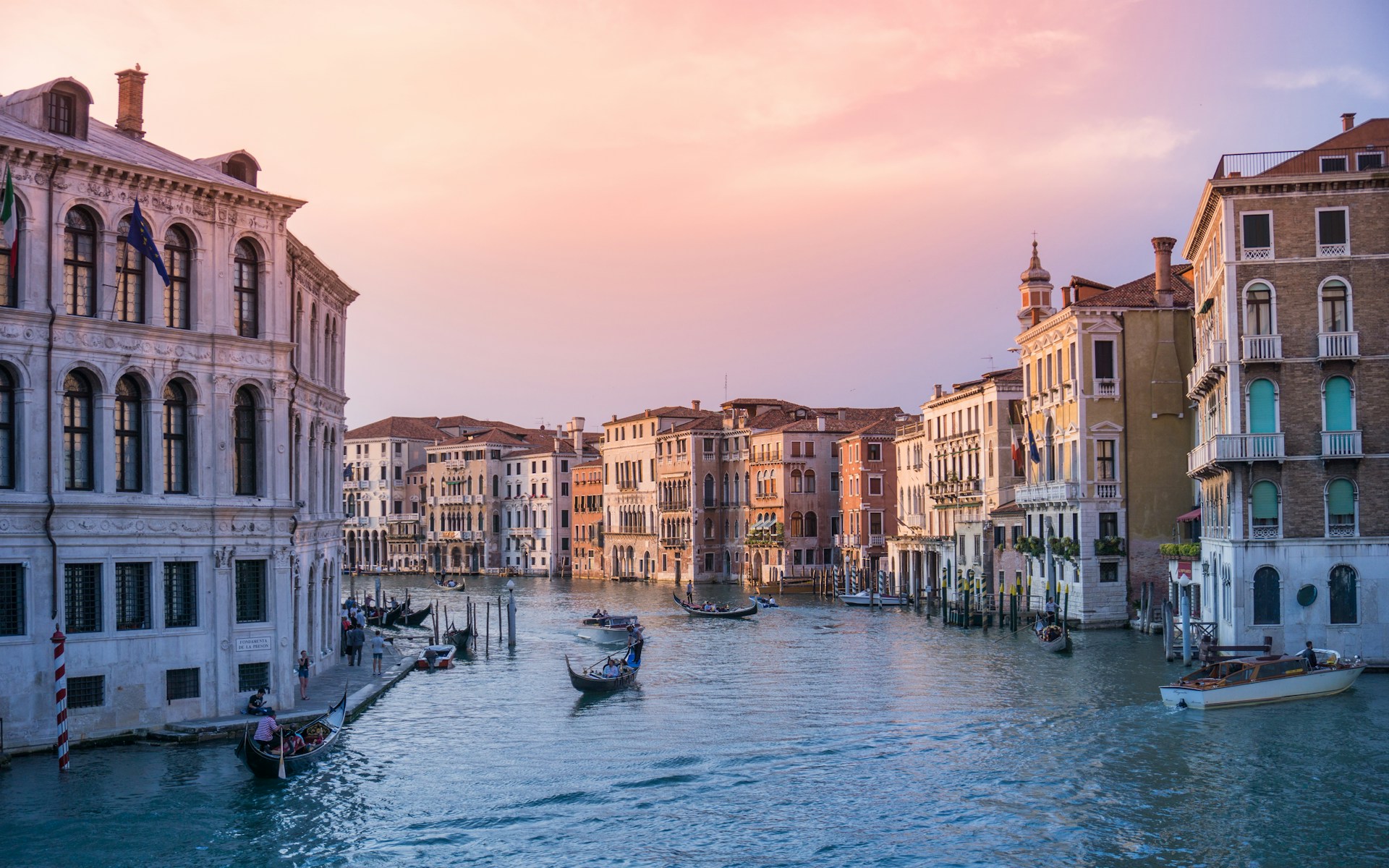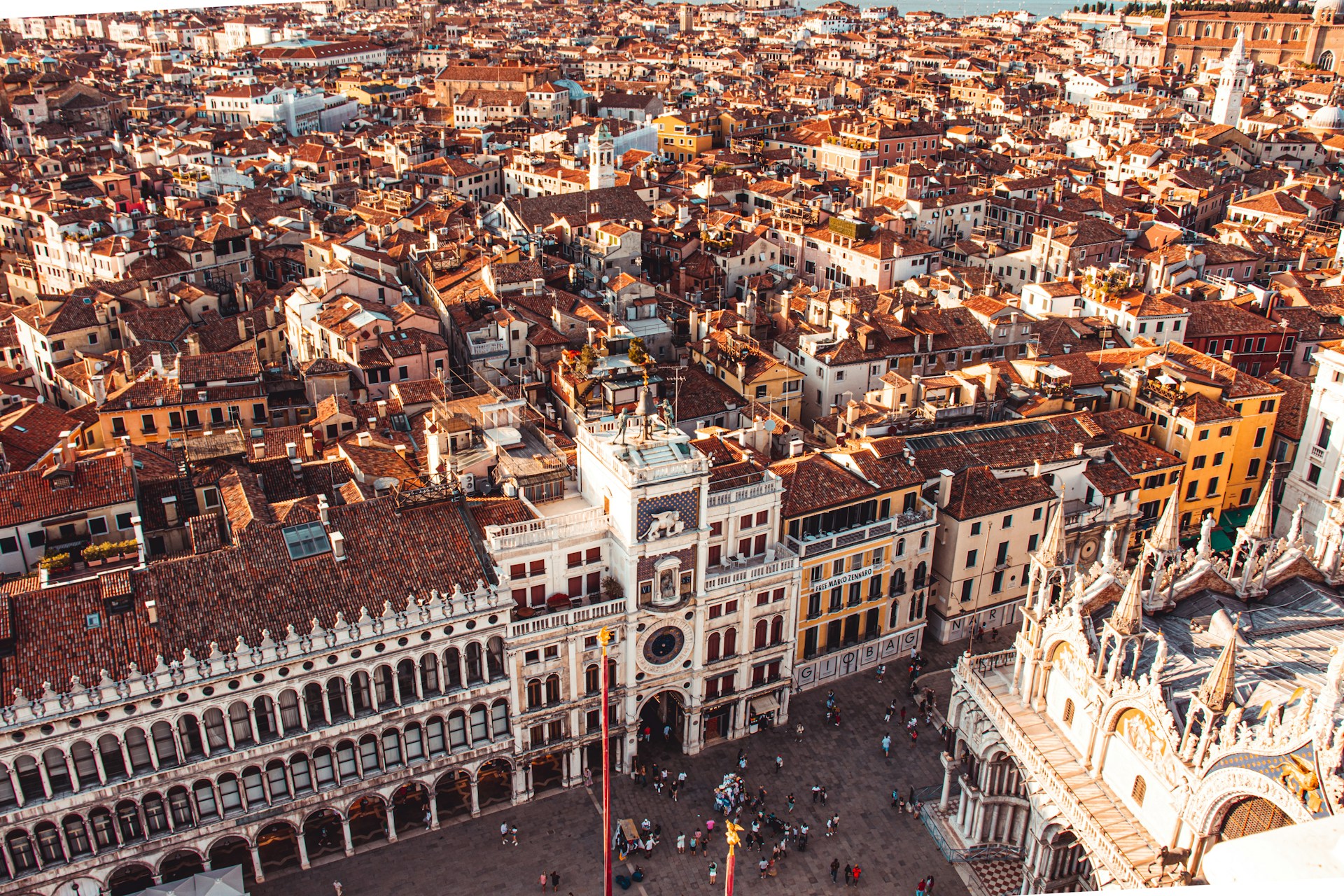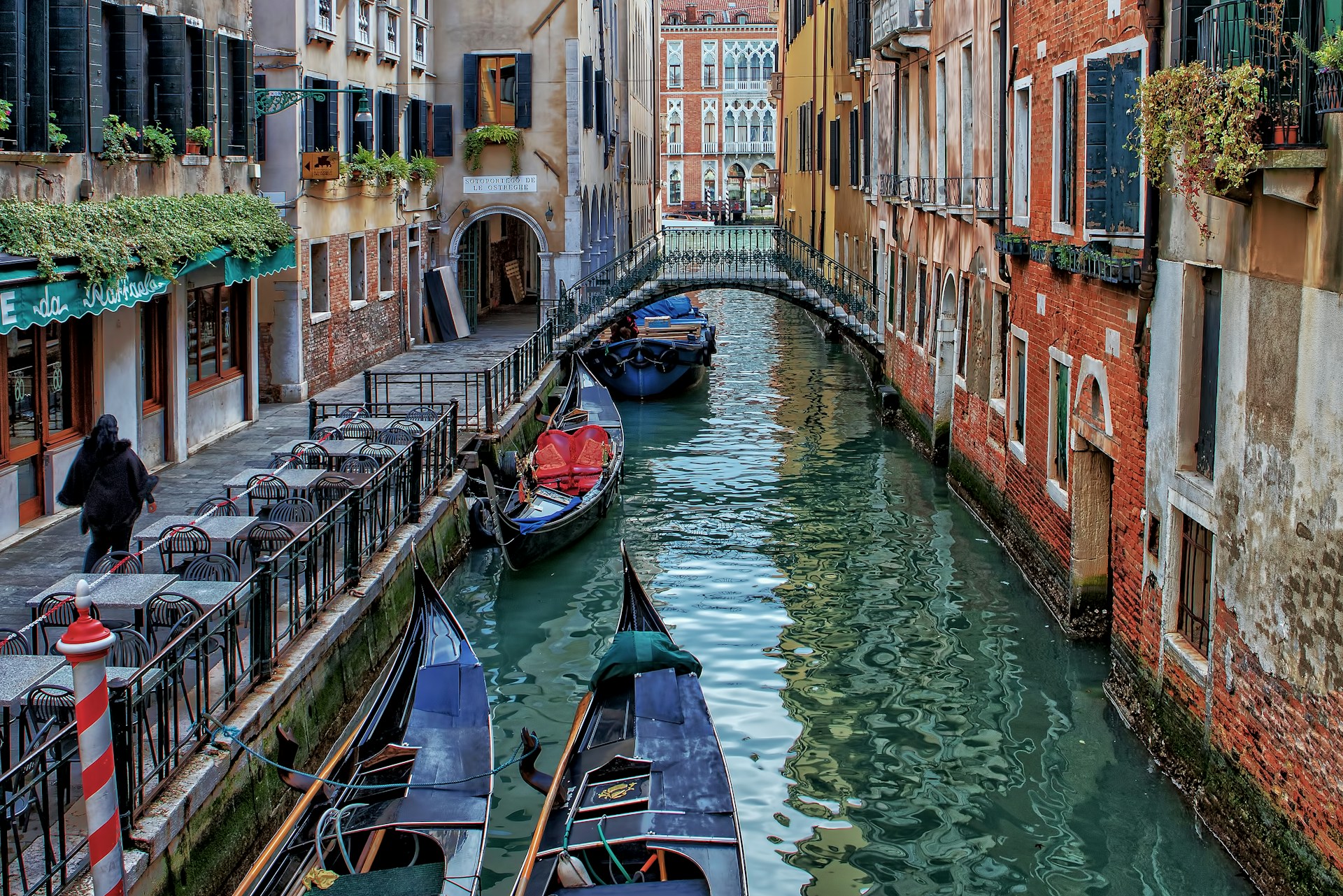Venice: Curiosities, Unusual Places and Local Traditions
Everyone should visit Venice at least once in their lifetime. Certain aspects are well-known, such as the fact that it is a floating city, yet there are also curiosities and details that perhaps not everyone knows about that make Venice an even more unique and precious Italian jewel. Leaning towers, architectural oddities, ancient quarters, local traditions and festivals are very special features of this city. Venice holds endless and amazing surprises in store so that every new visit is always unique.

Photo: Venice, Italy
Shopping, kosher restaurants and small shops
Having existed for more than 500 years, it is the oldest ghetto in history. Today, it is a lively and popular part of the Cannaregio quarter. Strada Nova crosses this quarter intersecting with small streets for shopping in craft and vintage shops. The kosher cuisine of the restaurants in the ghetto is excellent, serving traditional Jewish-Venetian recipes and dishes. There is no shortage of history and things to do to get to know the quarter even better, such as a visit to the Jewish Museum of Venice and a guided tour of the synagogues. You can also join a guided tour of the Ghetto to discover its Jewish traditions and culture.
The leaning skyline of Venice and its bell towers.
Did you know that more than one church in Venice has a leaning bell tower? A specific tour will help you discover the city from a very different point of view. The first is the bell tower of the Church of Santo Stefano, in the San Marco quarter. It is an example of Venetian Gothic and at 66 metres is one of the tallest in the city. Another fine example is the bell tower of the Church of San Giorgio dei Greci, in the Castello quarter, which has been leaning ever since it was built. The Orthodox church is one of the finest in the world. The bell tower of the Basilica of San Pietro di Castello, on the other hand, is characterized by its white Istrian stone and is located near the Arsenal. Last but not least, the bell tower of the Church of San Martino in Burano is a 56-metre tall neo-classical structure by now a symbol of the island.

Photo: Venice, Italy
An outdoor stroll over the bridges of Venice
There are hundreds of romantic, impressive and historic bridges in Venice where you can admire evocative views of the city and take amazing photos. The Bridge of Sighs is one of the best known. It connects the Doge's Palace to the New Prisons and its name refers to prisoners who sighed over their lost freedom while crossing it. The Rialto Bridge is renowned for its architecture. It was the hub of Venice's economy and today leads to the colourful Rialto fruit and vegetable market. Ponte Chiodo is a hidden, private bridge with a little thrill of adrenaline - together with Ponte Diavolo on the island of Torcello, it is the only one without parapets. Ponte dei Pugni, in the Dorsoduro quarter, was the point where opposing factions faced each other in bustling fights, with punches, kicks and stones.
The feast of San Martino in Venice: November 11
One of the most eagerly-awaited Venetian festivals, November 11 is the Feast of San Martino, a tradition that recalls Martin of Tours, one of the most popular saints in Europe from the Middle Ages. Ancient customs meant that at this time of year, the end of work in the fields was celebrated by drinking new wine and eating roasted chestnuts. Today, this feast-day is dedicated to children who amble around the city wearing paper crowns, capes and pots hoping to receive sweets and a few coins. Don't miss the typical chocolate and shortcrust pastry with icing depicting San Martino on horseback made and sold by all the pastry shops in Venice. The Castello quarter is also home to the church dedicated to San Martino, designed by architect Jacopo Sansovino, where the relics of the saint are kept.

Photo: Rialto Bridge, Venezia, Italy
The Madonna della Salute Festival and the Castradina tradition: November 21
Venice has celebrated the Feast of the Madonna della Salute for four centuries to commemorate the day when the plague of 1630 came to an end, the same epidemic Alessandro Manzoni wrote about in The Betrothed. The faithful visit the Basilica della Salute - the Baroque masterpiece by Baldassarre Longhena - on this day to attend mass and say prayers thanking the Virgin for the health of the city. Charitable events, wine and food tastings and cultural initiatives are organized throughout Venice and stalls with sweets, toys and balloons are set up for children outside the Basilica. The typical dish of this tradition is Castradìna, a soup with mutton, cabbage and onions.

